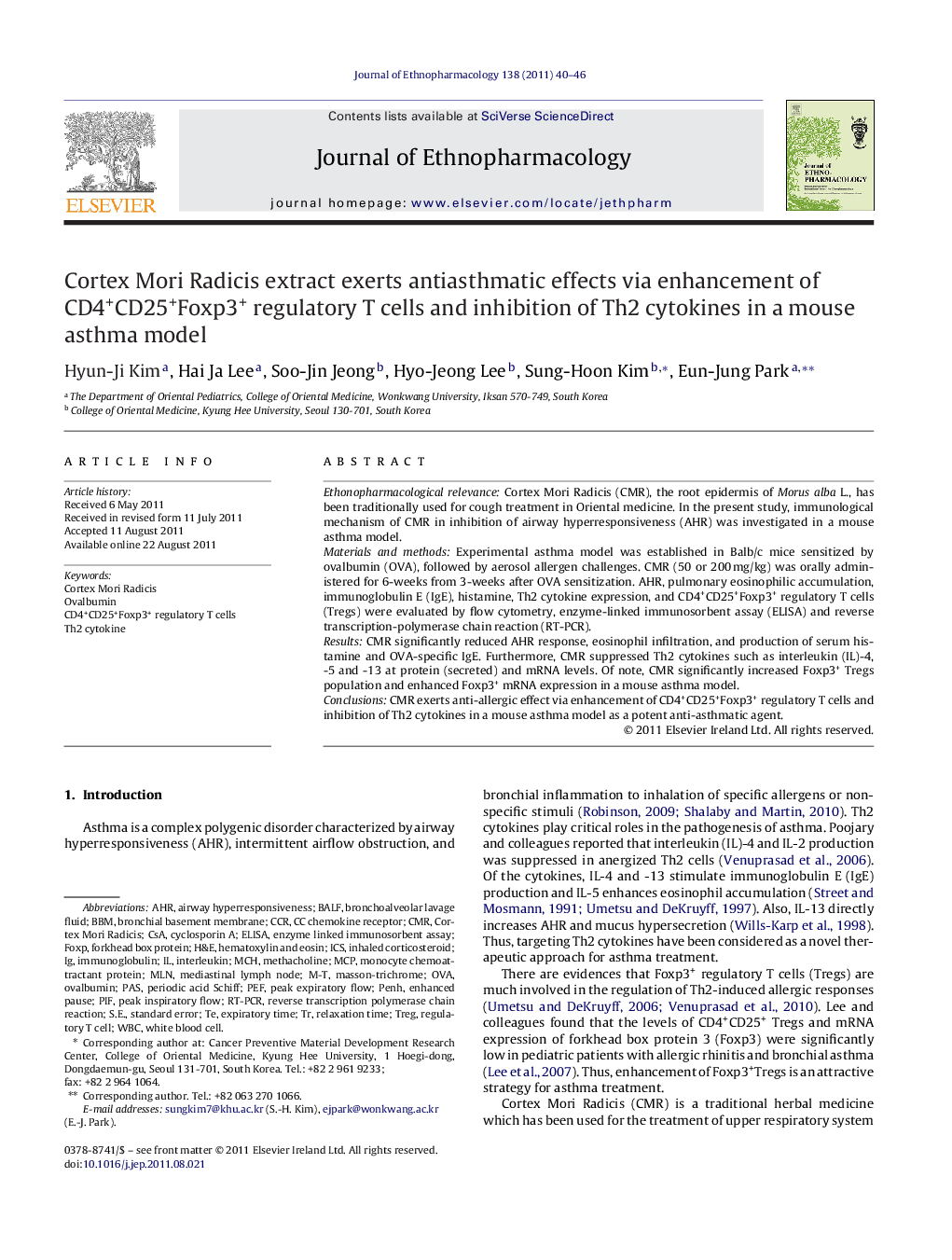| کد مقاله | کد نشریه | سال انتشار | مقاله انگلیسی | نسخه تمام متن |
|---|---|---|---|---|
| 5839214 | 1123989 | 2011 | 7 صفحه PDF | دانلود رایگان |

Ethonopharmacological relevanceCortex Mori Radicis (CMR), the root epidermis of Morus alba L., has been traditionally used for cough treatment in Oriental medicine. In the present study, immunological mechanism of CMR in inhibition of airway hyperresponsiveness (AHR) was investigated in a mouse asthma model.Materials and methodsExperimental asthma model was established in Balb/c mice sensitized by ovalbumin (OVA), followed by aerosol allergen challenges. CMR (50 or 200Â mg/kg) was orally administered for 6-weeks from 3-weeks after OVA sensitization. AHR, pulmonary eosinophilic accumulation, immunoglobulin E (IgE), histamine, Th2 cytokine expression, and CD4+CD25+Foxp3+ regulatory T cells (Tregs) were evaluated by flow cytometry, enzyme-linked immunosorbent assay (ELISA) and reverse transcription-polymerase chain reaction (RT-PCR).ResultsCMR significantly reduced AHR response, eosinophil infiltration, and production of serum histamine and OVA-specific IgE. Furthermore, CMR suppressed Th2 cytokines such as interleukin (IL)-4, -5 and -13 at protein (secreted) and mRNA levels. Of note, CMR significantly increased Foxp3+ Tregs population and enhanced Foxp3+ mRNA expression in a mouse asthma model.ConclusionsCMR exerts anti-allergic effect via enhancement of CD4+CD25+Foxp3+ regulatory T cells and inhibition of Th2 cytokines in a mouse asthma model as a potent anti-asthmatic agent.
We showed that Cortex Mori Radicis extract exerts antiasthmatic effects via enhancement of CD4+CD25+Foxp3+ regulatory T cells and inhibition of Th2 cytokines in a mouse asthma model.117
Journal: Journal of Ethnopharmacology - Volume 138, Issue 1, 31 October 2011, Pages 40-46